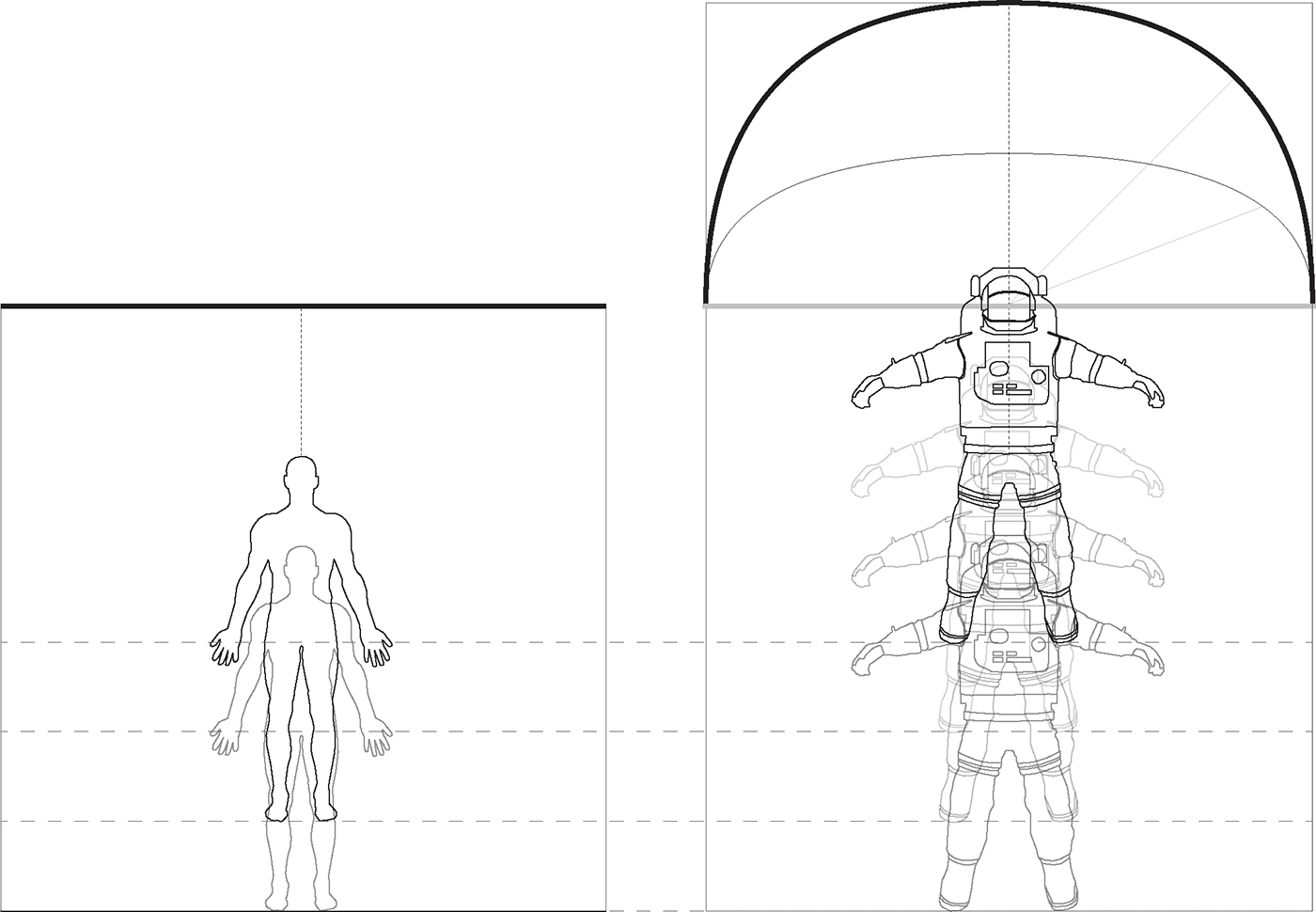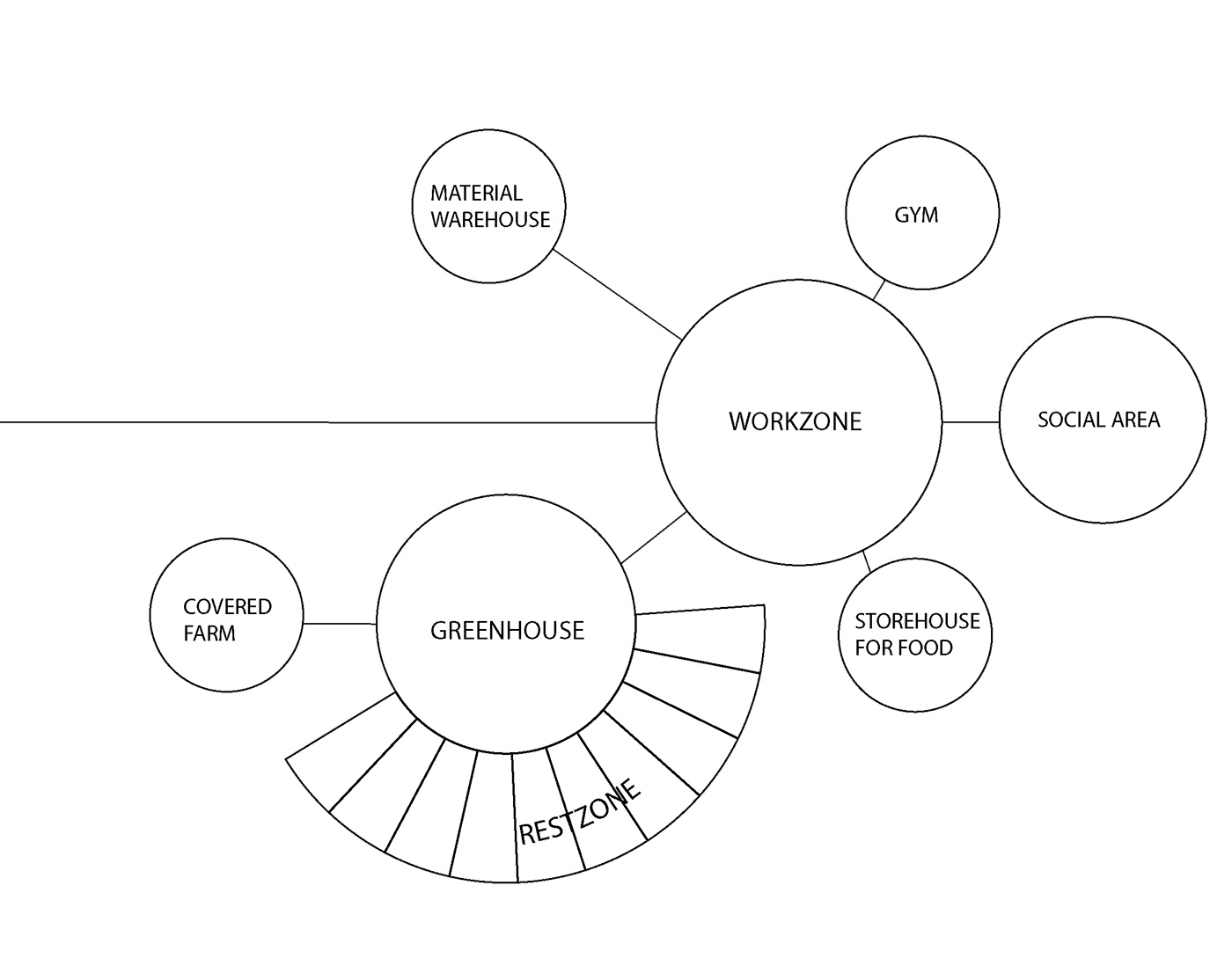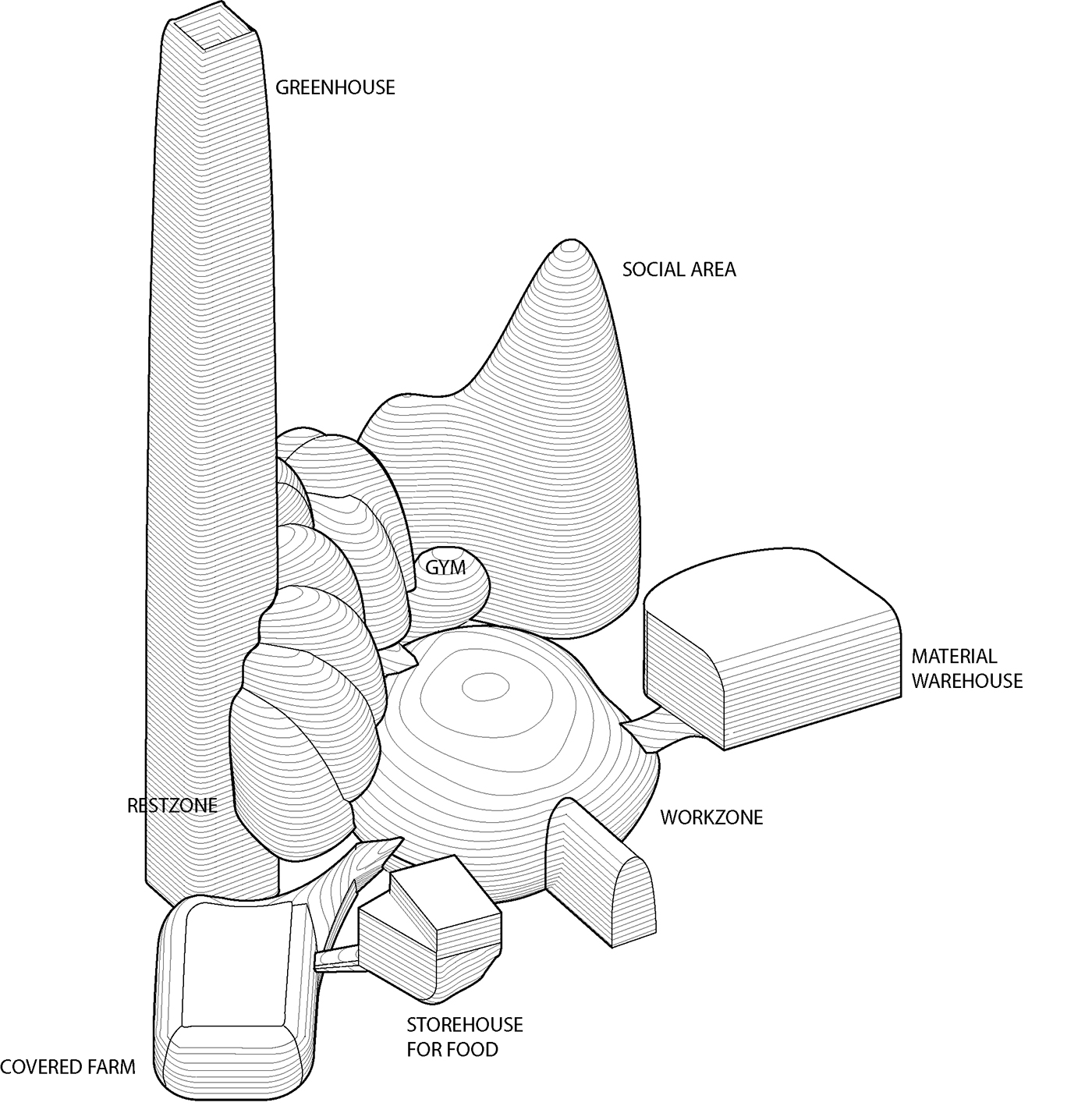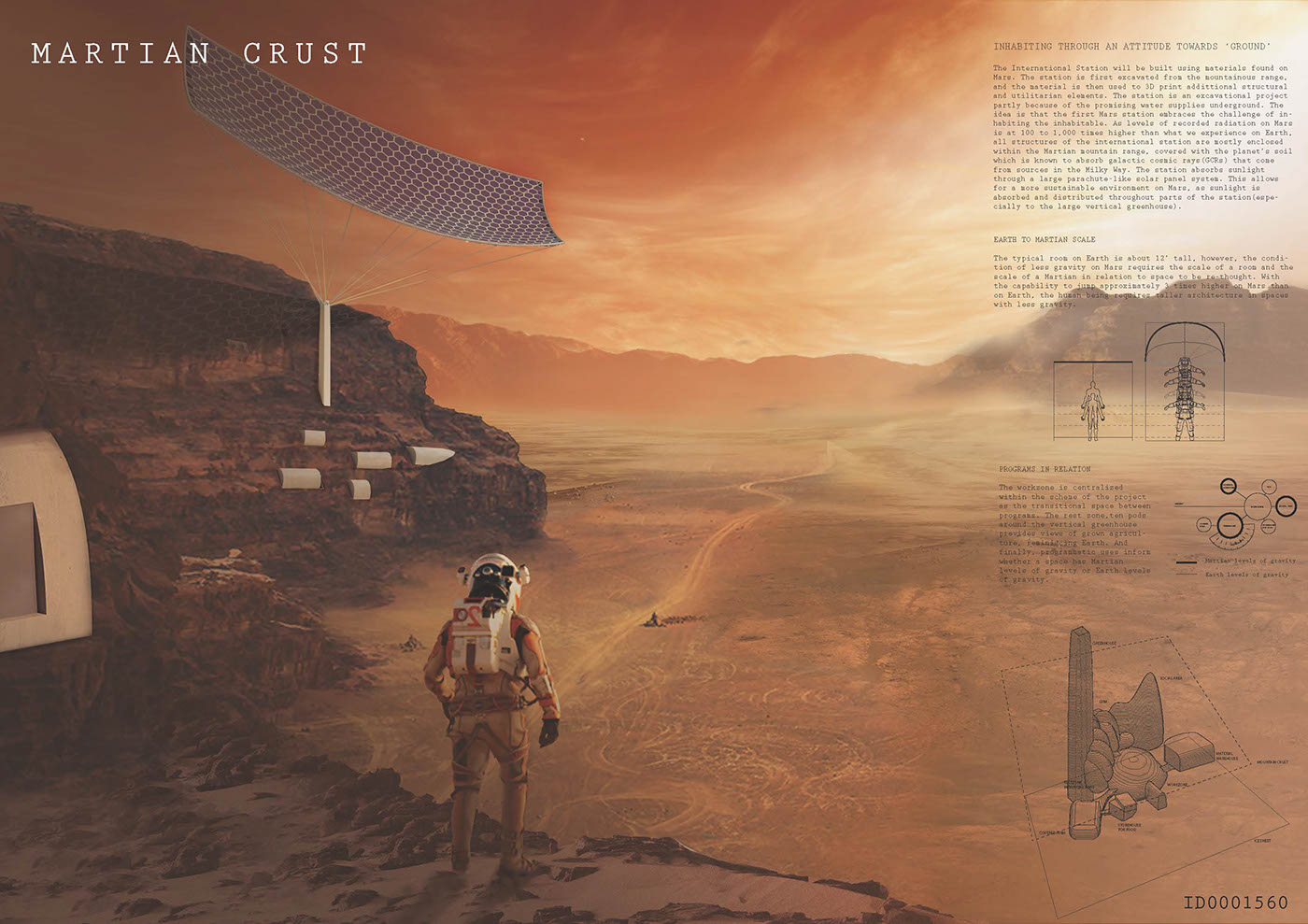INHABITING THROUGH AN ATTITUDE TOWARDS ‘GROUND’
The International Station will be built using materials found on Mars. The station is first excavated from the mountainous range, and the material is then used to 3D print additional structural and utilitarian elements. The station is an excavation project partly because of the promising water supplies underground. The idea is that the first Mars station embraces the challenge of inhabiting the inhabitable. As levels of recorded radiation on Mars is at 100 to 1,000 times higher than what we experience on Earth, all structures of the international station are mostly enclosed within the Martian mountain range, covered with the planet’s soil which is known to absorb galactic cosmic rays(GCRs) that come from sources in the Milky Way. The station absorbs sunlight through a large parachute-like solar panel system. This allows for a more sustainable environment on Mars, as sunlight is absorbed and distributed throughout parts of the station(especially to the large vertical greenhouse).

EARTH TO MARTIAN SCALE
The typical room on Earth is about 12’ tall, however, the condition of less gravity on Mars requires the scale of a room and the scale of a Martian in relation to space to be re-thought. With the capability to jump approximately 3 times higher on Mars than on Earth, the human being requires taller architecture in spaces with less gravity.

PROGRAMS IN RELATION
The work zone is centralized within the scheme of the project as the transitional space between programs. The rest zone,ten pods around the vertical greenhouse provides views of grown agriculture, reminiscing Earth. And finally, programmatic uses inform whether a space has Martian levels of gravity or Earth levels of gravity.


